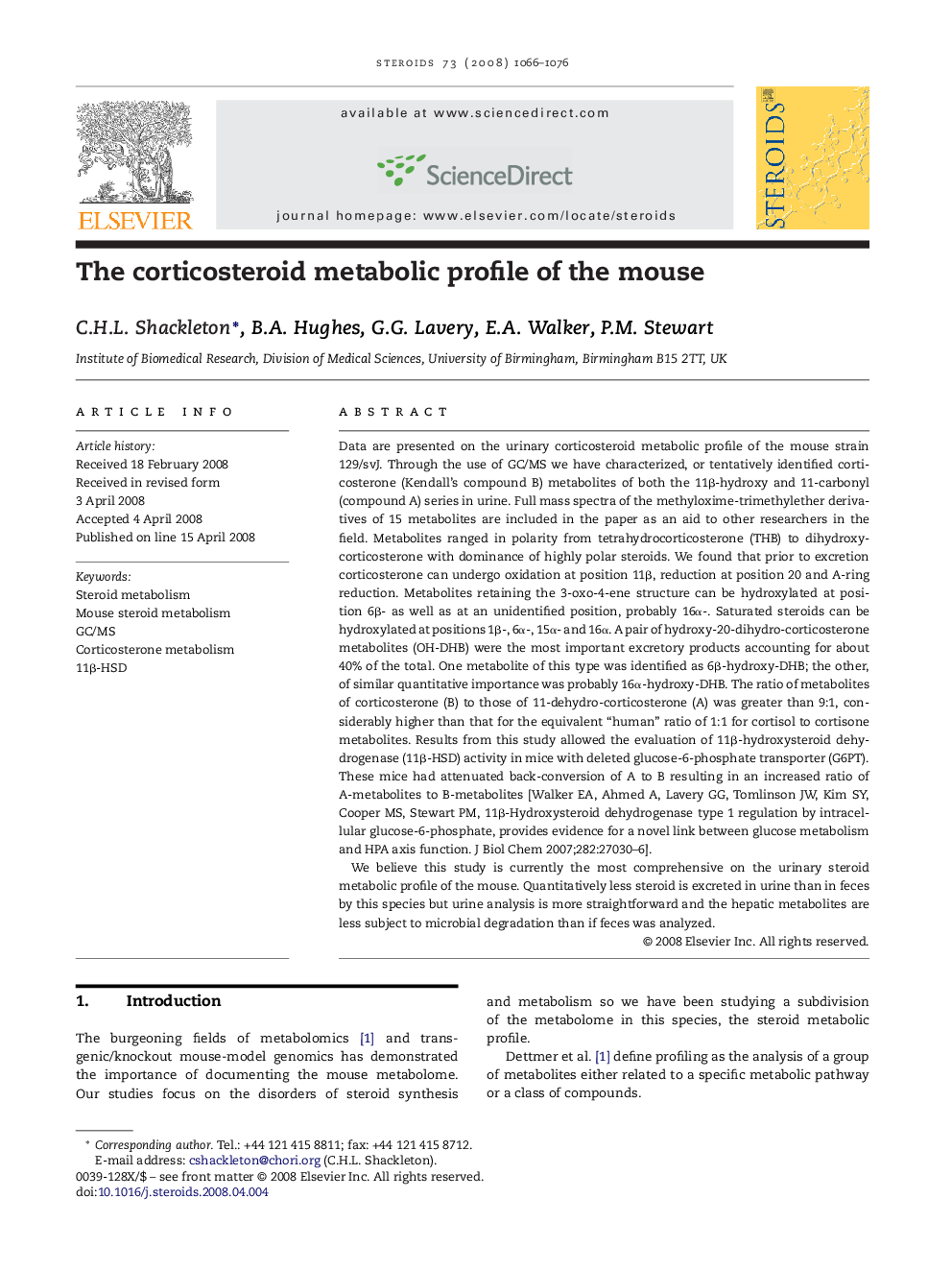| کد مقاله | کد نشریه | سال انتشار | مقاله انگلیسی | نسخه تمام متن |
|---|---|---|---|---|
| 2029424 | 1070586 | 2008 | 11 صفحه PDF | دانلود رایگان |

Data are presented on the urinary corticosteroid metabolic profile of the mouse strain 129/svJ. Through the use of GC/MS we have characterized, or tentatively identified corticosterone (Kendall's compound B) metabolites of both the 11β-hydroxy and 11-carbonyl (compound A) series in urine. Full mass spectra of the methyloxime-trimethylether derivatives of 15 metabolites are included in the paper as an aid to other researchers in the field. Metabolites ranged in polarity from tetrahydrocorticosterone (THB) to dihydroxy-corticosterone with dominance of highly polar steroids. We found that prior to excretion corticosterone can undergo oxidation at position 11β, reduction at position 20 and A-ring reduction. Metabolites retaining the 3-oxo-4-ene structure can be hydroxylated at position 6β- as well as at an unidentified position, probably 16α-. Saturated steroids can be hydroxylated at positions 1β-, 6α-, 15α- and 16α. A pair of hydroxy-20-dihydro-corticosterone metabolites (OH-DHB) were the most important excretory products accounting for about 40% of the total. One metabolite of this type was identified as 6β-hydroxy-DHB; the other, of similar quantitative importance was probably 16α-hydroxy-DHB. The ratio of metabolites of corticosterone (B) to those of 11-dehydro-corticosterone (A) was greater than 9:1, considerably higher than that for the equivalent “human” ratio of 1:1 for cortisol to cortisone metabolites. Results from this study allowed the evaluation of 11β-hydroxysteroid dehydrogenase (11β-HSD) activity in mice with deleted glucose-6-phosphate transporter (G6PT). These mice had attenuated back-conversion of A to B resulting in an increased ratio of A-metabolites to B-metabolites [Walker EA, Ahmed A, Lavery GG, Tomlinson JW, Kim SY, Cooper MS, Stewart PM, 11β-Hydroxysteroid dehydrogenase type 1 regulation by intracellular glucose-6-phosphate, provides evidence for a novel link between glucose metabolism and HPA axis function. J Biol Chem 2007;282:27030–6].We believe this study is currently the most comprehensive on the urinary steroid metabolic profile of the mouse. Quantitatively less steroid is excreted in urine than in feces by this species but urine analysis is more straightforward and the hepatic metabolites are less subject to microbial degradation than if feces was analyzed.
Journal: Steroids - Volume 73, Issue 11, October 2008, Pages 1066–1076